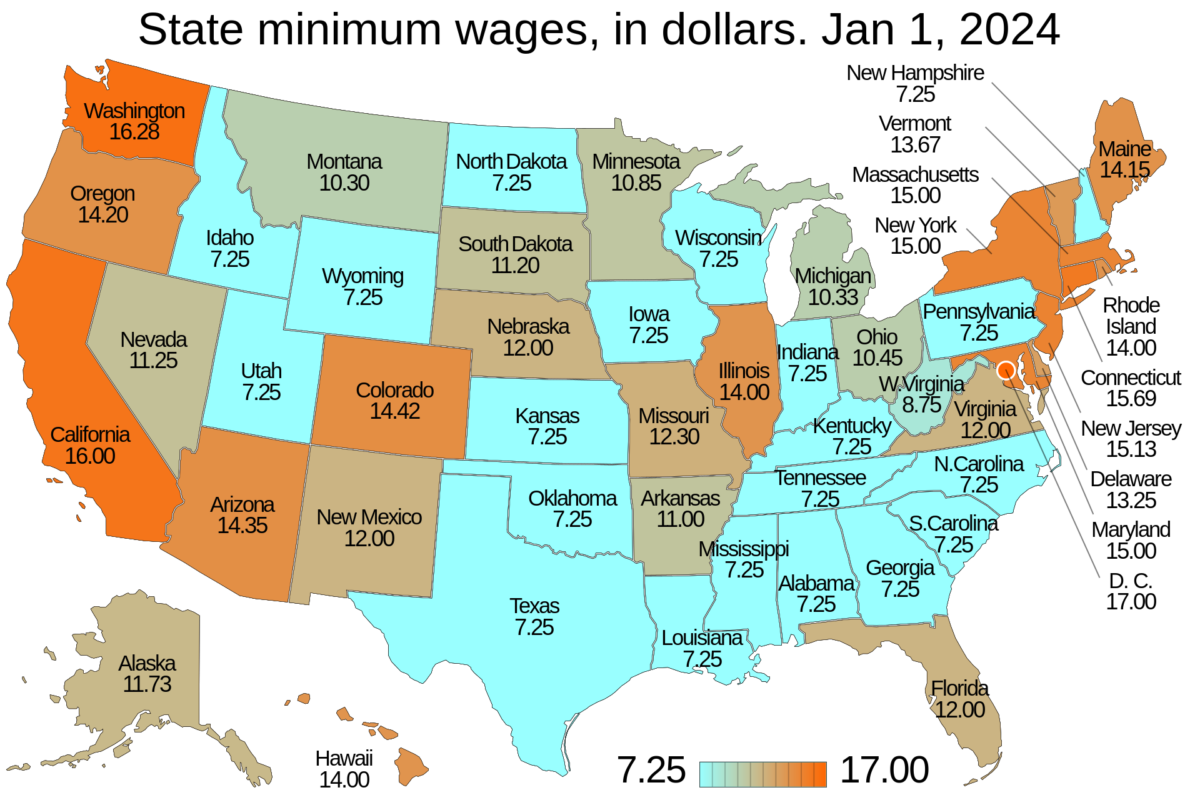By Izzy Aparicio
California’s recent enactment of a new law, establishing a separate minimum wage of $20 specifically for fast-food restaurant employees, has ignited a significant debate. Effective April 1, this wage hike represents a substantial 25% increase for some workers. While many employees welcome the boost in their earnings, business owners are grappling with the accompanying financial strain.
Franchise owners statewide have swiftly implemented measures to counterbalance the heightened labor costs. Reports abound of businesses trimming employee hours and, in some cases, resorting to layoffs, with Pizza Hut announcing plans to eliminate 1,000 delivery driver positions.
Consumers have also felt the reverberations of the wage increase. Nearly all fast-food establishments have adjusted their pricing structures, citing the need to balance operational expenses. Many have preemptively initiated price hikes, with increases ranging from 5%-15% across various menu items. Consequently, customers find themselves confronted with higher costs for familiar products, impacting their purchasing power and household budgets.
Amid these developments, a central question emerges: who benefits from this wage adjustment? Primarily, it remains a positive development for workers. Given California’s status as one of the most expensive places to live in the United States, employees understandably welcome the additional income, which enables them to better afford essential expenses such as groceries and bills. However, for business owners, the situation presents a complex challenge. The looming question is whether they will persist in reducing staff and cutting hours or if they will discover alternative strategies to navigate the financial landscape. Only time will reveal the long-term implications for both workers and businesses in California’s fast-food industry.
While the $20 fast food wage law may benefit workers by increasing their incomes, it could also have negative consequences for businesses, employment opportunities, and economic competitiveness in California.
Potential Negative Effects:
- Job Losses: Businesses may respond to increased labor costs by reducing their workforce through layoffs or hiring freezes.
- Reduced Hours: Employers may cut back on employee hours to offset higher wages, resulting in reduced income for workers.
- Business Closure: Smaller or struggling businesses may find it challenging to absorb higher labor costs and may be forced to close.
- Price Inflation: Businesses may raise prices on products and services to cover increased labor costs, impacting consumers’ purchasing power
- Reduced Hiring: Higher labor costs may discourage businesses from hiring new employees or expanding operations, hindering job growth
- Competitive Disadvantage: Businesses in California may face a competitive disadvantage compared to neighboring states with lower minimum wages.
Potential Positive Effects:
- Higher Incomes: The wage increase directly benefits fast-food workers, potentially improving their quality of life.
- Reduced Income Inequality: Increasing the minimum wage can help reduce income inequality.
- Increased Consumer Spending: Higher wages could lead to increased consumer spending, benefiting local businesses.
Improved Morale and Productivity:
Higher wages can boost employee morale and productivity.
Social Benefits: Higher wages can lead to improved overall well-being for workers.
Potential for Economic Growth:
The wage increase could stimulate economic growth and create demand for goods and services.
While there may be concerns about the negative impacts, higher wages can also bring positive outcomes for workers, businesses, and the economy as a whole. Overall, the adoption of a $20 fast food wage law in Ohio policymakers would need to carefully consider these factors and weigh the potential benefits against the potential drawbacks before implementing such a policy.






